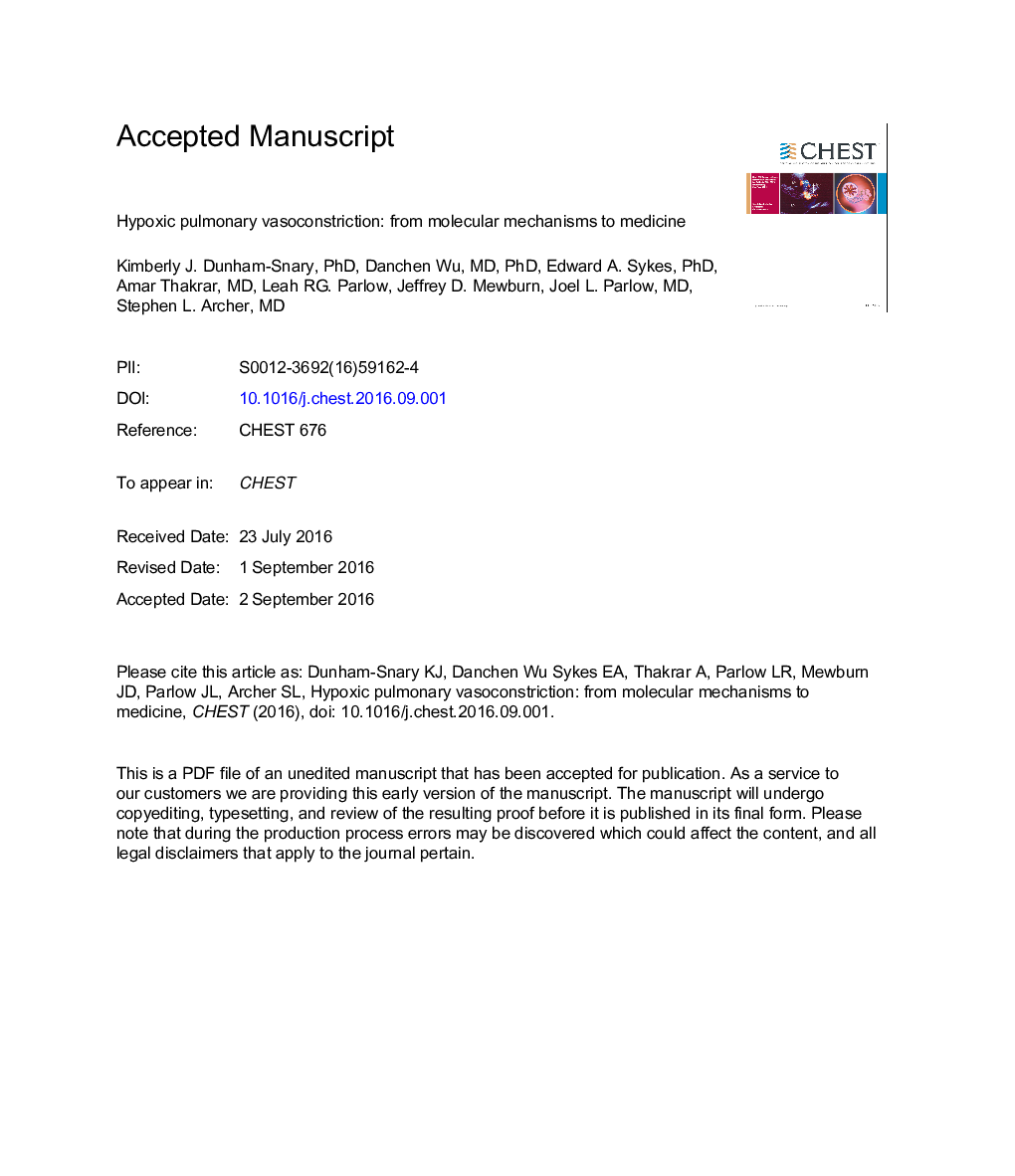| Article ID | Journal | Published Year | Pages | File Type |
|---|---|---|---|---|
| 5601059 | Chest | 2017 | 38 Pages |
Abstract
Hypoxic pulmonary vasoconstriction (HPV) is a homeostatic mechanism that is intrinsic to the pulmonary vasculature. Intrapulmonary arteries constrict in response to alveolar hypoxia, diverting blood to better-oxygenated lung segments, thereby optimizing ventilation/perfusion matching and systemic oxygen delivery. In response to alveolar hypoxia, a mitochondrial sensor dynamically changes reactive oxygen species and redox couples in pulmonary artery smooth muscle cells (PASMC). This inhibits potassium channels, depolarizes PASMC, activates voltage-gated calcium channels, and increases cytosolic calcium, causing vasoconstriction. Sustained hypoxia activates rho kinase, reinforcing vasoconstriction, and hypoxia-inducible factor (HIF)-1α, leading to adverse pulmonary vascular remodeling and pulmonary hypertension (PH). In the nonventilated fetal lung, HPV diverts blood to the systemic vasculature. After birth, HPV commonly occurs as a localized homeostatic response to focal pneumonia or atelectasis, which optimizes systemic Po2 without altering pulmonary artery pressure (PAP). In single-lung anesthesia, HPV reduces blood flow to the nonventilated lung, thereby facilitating thoracic surgery. At altitude, global hypoxia causes diffuse HPV, increases PAP, and initiates PH. Exaggerated or heterogeneous HPV contributes to high-altitude pulmonary edema. Conversely, impaired HPV, whether due to disease (eg, COPD, sepsis) or vasodilator drugs, promotes systemic hypoxemia. Genetic and epigenetic abnormalities of this oxygen-sensing pathway can trigger normoxic activation of HIF-1α and can promote abnormal metabolism and cell proliferation. The resulting pseudohypoxic state underlies the Warburg metabolic shift and contributes to the neoplasia-like phenotype of PH. HPV and oxygen sensing are important in human health and disease.
Keywords
HIFPAPSOD2mPAPPASMCChuvash polycythemiaflavin adenine dinucleotideHAPEHPHFADH2ROSAdenosine TriphosphateATPHigh altitude pulmonary edemahigh-altitude pulmonary edemaventilation/perfusionelectron transport chainPulmonary artery smooth muscle cellSuperoxide dismutase 2Pulmonary arteryHypoxia-inducible factorPulmonary artery pressuremean pulmonary artery pressureMitochondriaNADHNitric oxideNAD, nicotinamide adenine dinucleotideETchypoxic pulmonary vasoconstrictionHPVPulmonary hypertensionHypoxic pulmonary hypertensioncalVoltage-gated potassium channelsvoltage-gated calcium channelsReactive oxygen species
Related Topics
Health Sciences
Medicine and Dentistry
Cardiology and Cardiovascular Medicine
Authors
Kimberly J. PhD, Danchen MD, PhD, Edward A. PhD, Amar MD, Leah R.G. Parlow, Jeffrey D. Mewburn, Joel L. MD, Stephen L. MD,
